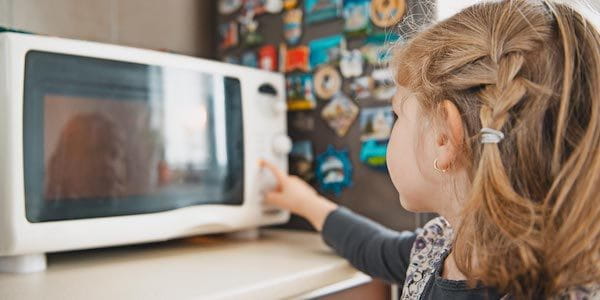Burn Prevention
Pediatric Emergency & Trauma Care
Contact Us
(321) 841-5437
Burn Prevention in Children
How to Protect Your Child from Burns
Keeping kids safe includes preventing burns. This can mean keeping young children out of the kitchen when cooking, placing pots and pans on back burners with handles turned inward and keeping hot beverage mugs out of the reach of toddlers. But some of the most serious and most common dangers lurk in not-so-obvious situations.
Chemical burns
- Keep devices with button batteries (i.e., car keys, remote controls, electric candles, singing books) away from children. Saliva can trigger an electrical current which can burn the esophagus.
- If batteries or chemicals are swallowed, go to the emergency room immediately for treatment. Do not allow your child to eat or drink and do not try to induce vomiting.
Cooking
- Create a kid-free zone while cooking. If babies are present, place them in a highchair outside the kid-free zone.
- Use back burners of stove and turn handles away from the edge to prevent children from pulling contents onto themselves.
- Allow microwaved foods to sit for at least three minutes before touching.
- Avoid using microwaves to heat baby milk or formula to prevent dangerous hot spots. Always check milk temperature by using the inside of your wrist.
- For safety, warm milk by immersing bottle in warm water. Check that milk has cooled before feeding baby.
Fire
- Ashes and coals from a fire can stay hot for three days after the fire is out.
- Install a safety gate or screen around fire. Teach kids to avoid the glass around fireplace as glass can stay hot for up to an hour after fire is out.
- Make sure there are working smoke alarms throughout the home.
- Create and practice a home fire escape plan, including at least two ways out of every room. Designate a meeting place outside the home at a safe distance.
Hot drinks
- Never carry hot drinks while children are playing underfoot or while holding a child.
- Avoid placing hot beverage cups on strollers.
- Use caution with hot beverages without lids to prevent injury from curious children reaching for the cup.
Water
- Set household water heater below 120̊ F. Bath water should not be hotter than 100̊ F.
- Test water with your wrist or elbow before placing child in tub.
- Teach kids to turn on cold water first, before hot.









